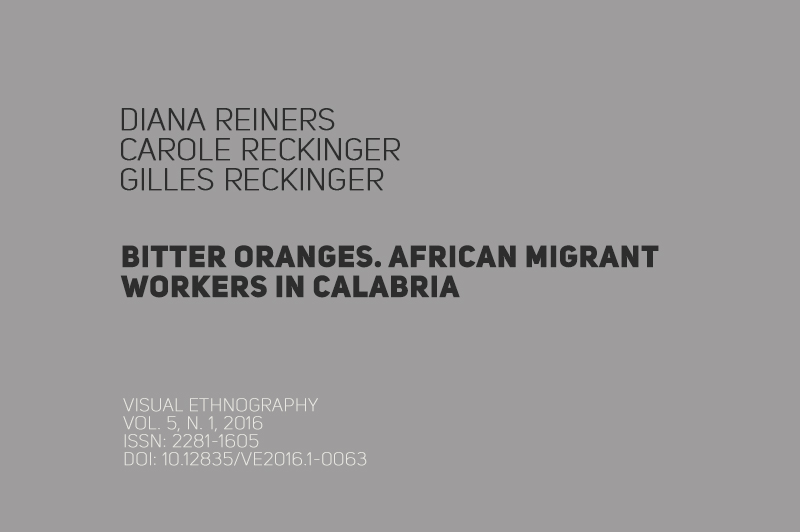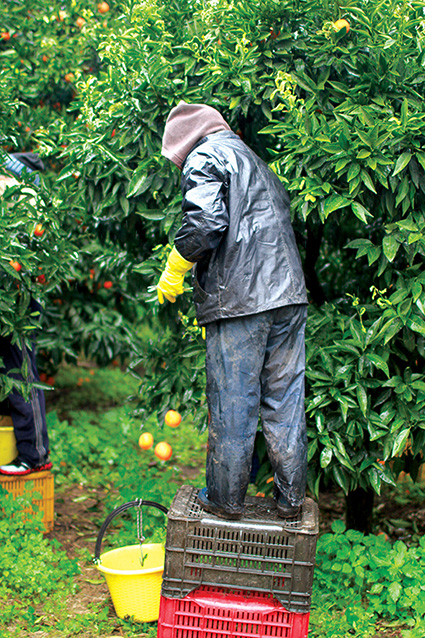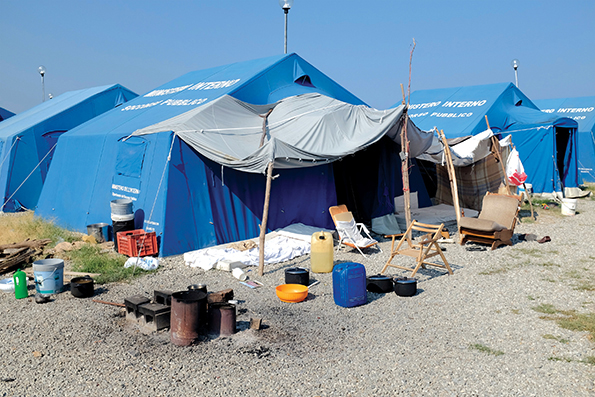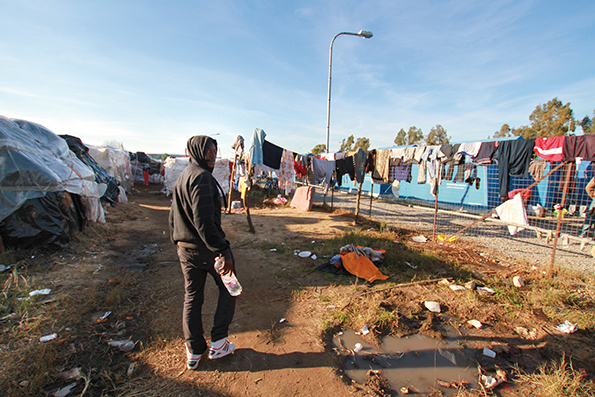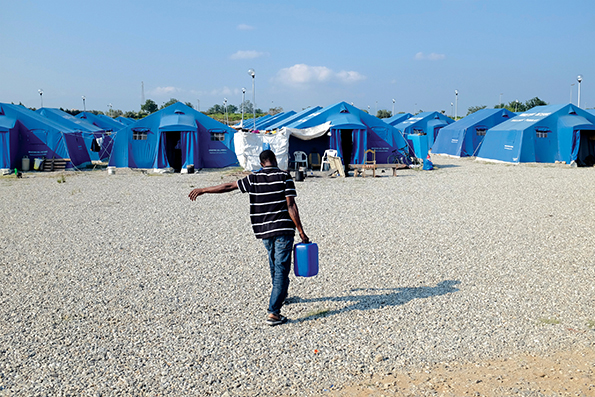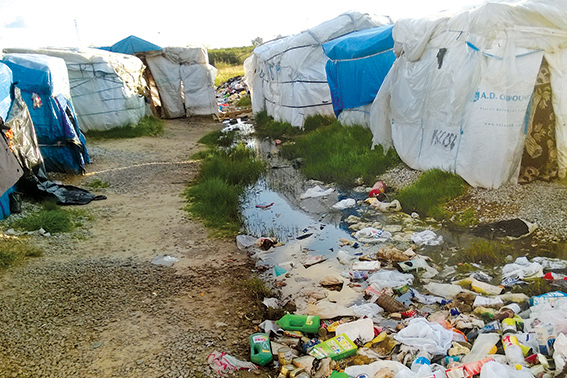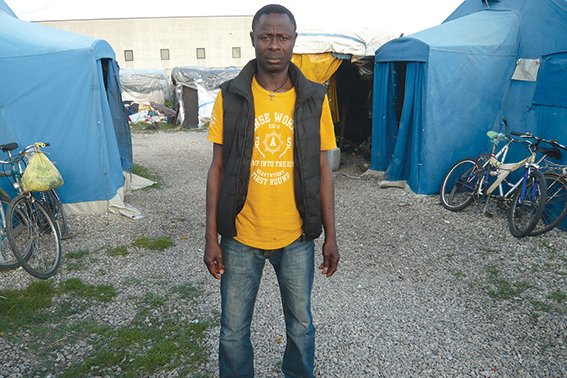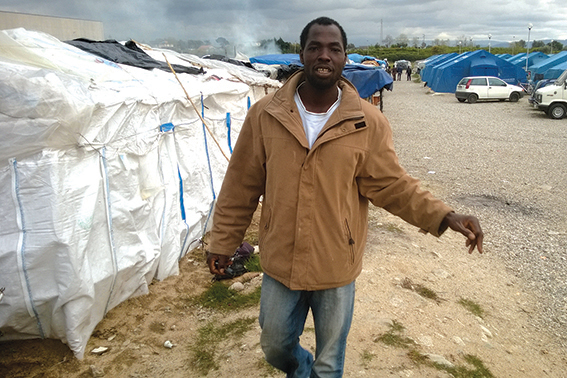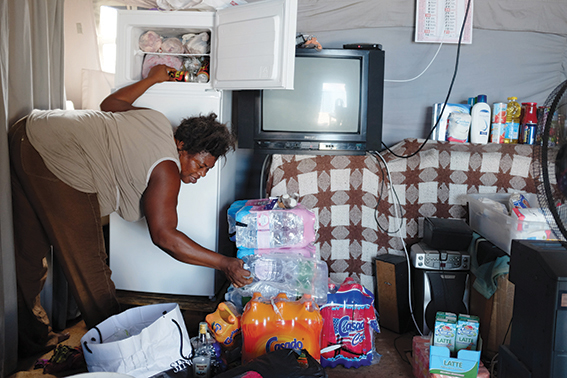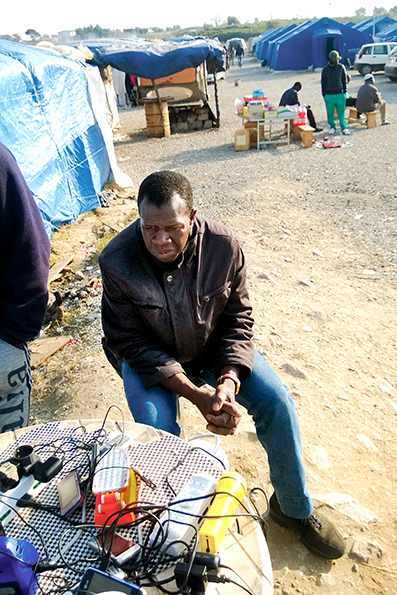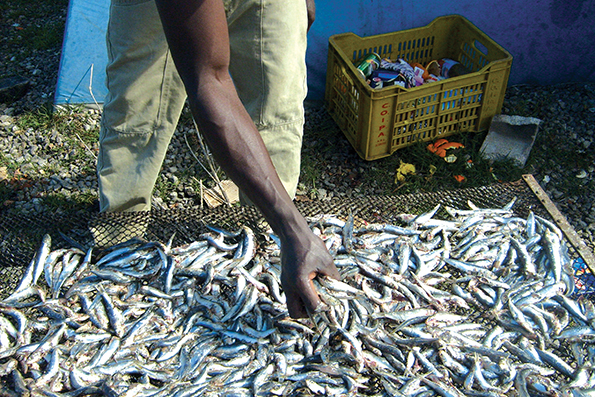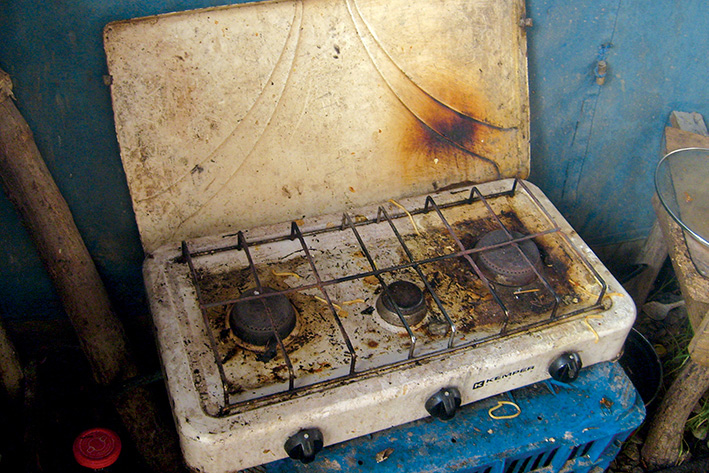-
The authors
Dr. Diana Reiners
Social anthropologists (contract professor at Free University of Bozen (I), University of St. Gallen (CH) and University of Graz (A).
Prof. Dr. Gilles Reckinger
Professor at University of Innsbruck, Austria.
Email: gilles.reckinger@uibk.ac.at
Carole Reckinger
Photographer and social scientist, M.Sc.
Website: www.carolereckinger.co.uk
E-mail: carole81@gmail.com
-
Abstract
The working conditions of African labourers in Calabria are characterized by severe precariousness, exploitation and poor remuneration, which lead to deplorable living conditions. Thousands of migrant workers live in unheated tent camps and makeshift barracks. The catastrophic living and working conditions of orange pickers in Calabria are widely unknown to the general public. The Bitter Oranges project combines documentary photography, self-representation and short captions explaining the economic and political conditions that provide a framework to the visual ethnographic material. The goal of the visual ethnographic exhibition is to show the widely ignored working and living conditions of African migrants in Southern Italy to a broad public all over Europe. The exhibition responds to one of the urgent needs migrants in Calabria’s camps expressed: to overcome the structural and epistemological violence of their hidden and unseen exploitation. The participatory approach of this visual anthropological study further aims to render “voicing” possible: giving the people the means to photographically document their destitute everyday living conditions. Finally, this visual anthropological study aims to empower people who are ostracized and forced to live at the margins of European society by offering the opportunity to represent themselves and gain a public platform. This exhibition contributes to a decolonized gaze, putting a focus on people’s agency despite the slave–like conditions that are imposed on them structurally.
Further information: www.bitter-oranges.com.
References
RECKINGER, Gilles. 2013 Lampedusa. Begegnungen am Rande Europas, Wuppertal.
REINERS, Diana. 2010 Verinnerlichte Prekarität. Jugendliche MigrantInnen am Rande der Arbeitsgesellschaft, Konstanz. -
Context of the project
The Bitter Oranges project started in 2012, and was funded by the Luxembourg Ministry of Culture Higher Education and Research, the Luxembourg National Research Fund as well as the University of Innsbruck. It was a continuation from past research projects by the researchers on migration, precariousness and the European border regime (Reckinger 2013, Reiners 2010). The Bitter Oranges project addresses some desiderata in recent sociological and anthropological research about boat migration to Southern Italy by ethnographically following the migrants after they are brought from Lampedusa to the Italian mainland, and by trying to understand how the control of migration movements on national and EU levels are intertwined with precarious labour markets. The exhibition, "Bitter Oranges. African Migrant Workers in Calabria," was first launched on December 2nd, 2014 at Abbaye Neumunster Cultural Centre, Luxembourg. It has since been shown in different cities in Europe and North America. -
Bitter Oranges
Thousands of immigrants arrive by boat to Italy every year, widely overstretching the access to housing facilities and state support. More and more immigrants, including asylum seekers as well as refugees, are left to their own devices. To survive, they have no other choice than to seek seasonal day-to-day labour on fruit and vegetable plantations in Southern Italy. The declining sale prices for oranges in the 1990s forced Calabrian small-scale farmers to increasingly employ migrant seasonal workers from Eastern Europe on lower wages in order to remain competitive. A new reservoir of even cheaper labour became available with the increasing number of boat migrants from Africa a decade later. In recent times, the situation has become more critical with the heavy influx of refugees. With more nation states closing their borders as the Schengen area falls apart, it has become impossible for many migrants to leave Italy. African harvest workers are hired on a daily basis without legal contracts. On average, a daily wage for 12 - 14 hours of work amounts to 25 euro. Competition is intense and most African harvest workers only find work a few days a month, resulting in monthly incomes ranging from 100 to 300 euro. -
1. (Orange picker) Carole Reckinger
Most African harvest workers live in emergency shelters built outside of town in a remote industrial area. This distance from the heart of the city was intentional After an uprising in 2010, when African migrants protested against exploitation and recurrent assaults by local youth, the workers were forced out of town and the abandoned factories where migrants lived were demolished. Many workers returned shortly afterward, as no alternative harvest work was available during the winter season. Italian civil defence provided tents for a maximum of 500 people, but neither electricity nor any organisational or administrative institutional structure was provided. Authorities demolished the tent camp citing hygienic reasons in the summer of 2013, but the ragged tents were never disposed of. A new tent camp was built only 200 meters away. Presently, access to water is only available in four sanitary containers. These are not connected to a sewage system, and a tank truck empties the septic tank once a week. As the camp is not connected to the power grid, the residents have tapped into the street lighting for electricity.
-
3. (slum) Carole Reckinger
During the 2015/2016 winter season, the camp spread out even further when several hundred additional African migrants joined the camp in hope for work. For many migrants, the orange harvest is a last resource for migrants that have not managed to find decent work anywhere else in Italy. A new slum has developed a few hundred meters further in and around an abandoned industrial building. Those who cannot afford to migrate within Italy at the end of the harvest season to find other seasonal work remain during the hot summer months. With no available jobs, many of them suffer from hunger and malnutrition.
-
4. (tents summer) Carole Reckinger
Today, we have a new method to teach children. The man with the black pants is the teacher walking his students to school and is looking at a student playing [on all fours]. The man with the white shirt [a student] is advising his colleagues to go to school. Because if they don’t, nothing good will come of it. Thanks to such advice, we now have students graduating in our and other villages. Thanks to this change, things are better. Change your environment. Change even the character of your thoughts so that you know that other things will come. But never forget this is a big change. Take this type of change as an example; come out of the bad things and welcome the good things. The school from the past and today’s school have their differences, but we need to follow both, a little of each. Children’s education starts at home, and then teachers do the rest. This is why I took these pictures, to remind people that there used to be a type of school [under the mango tree] and today we have the schools where pupils sit at desks. -
9. I.
The mobile phone is an indispensable possession. It serves as a connection to the family, a way to share information with each other, and as a replacement for a residential address. The authorities notify the migrants by phone if they need to pick up or renew their documents. Often, family members who depend on the support of the migrants call several times a day asking them to send money.10. I.
Many of the workers’ pictures show people putting their skills and resources to work as a means of earning a supplementary income, and running micro-businesses such as a bicycle repair workshop, offering services as a barber or selling buckets of hot water heated over an open fire. The prices vary according to what the customer is able to pay. The shared conditions of deprivation thus create an economic coping structure among the inhabitants of the tent city that relies on both solidarity and mutual interdependence.11. M.
Most of the men had fled persecution or poverty by immigrating to economically well-off North African countries, which offered job opportunities and decent housing conditions. As foreign workers, they could earn a living that allowed them to send remittances for their relatives. Violent crises and civil wars that followed the Arab Spring forced many sub-Saharan migrants re-emigrate to Europe.12. F.
A number of pictures by the camp inhabitants focus on the most urgent aspect of poverty: the scarcity of food and the problems of food conservation and health-threatening conditions. F., the author of the picture, belonged to the economic elite of his country of origin before his family was killed in a political overthrow.Refbacks
- There are currently no refbacks.
ISSN Print 2499-9288
ISSN Online 2281-1605
Publisher Edizioni Museo Pasqualino
Patronage University of Basilicata, Italy
Web Salvo Leo
Periodico registrato presso il Tribunale di Palermo con numero di registrazione 1/2023



